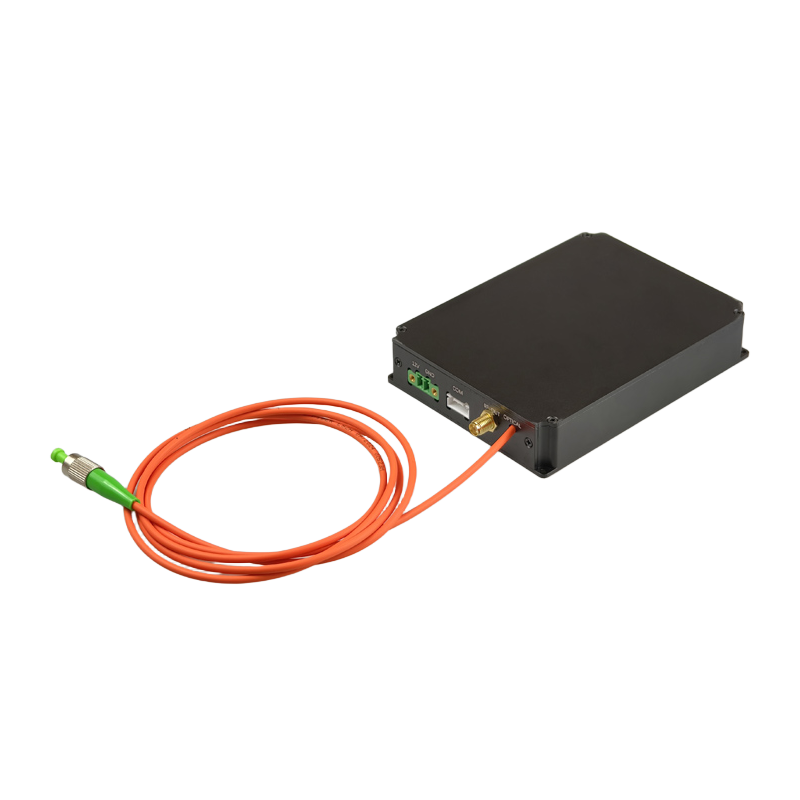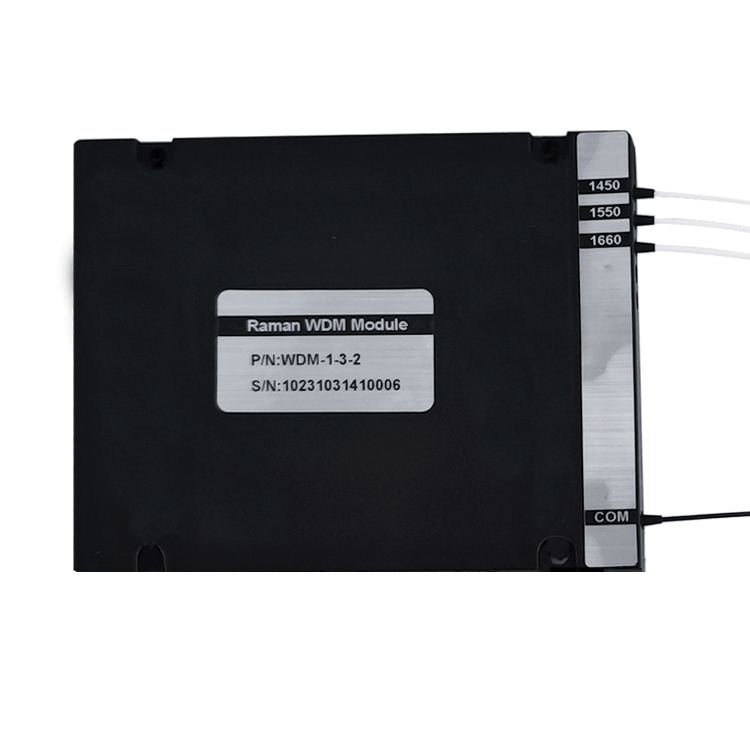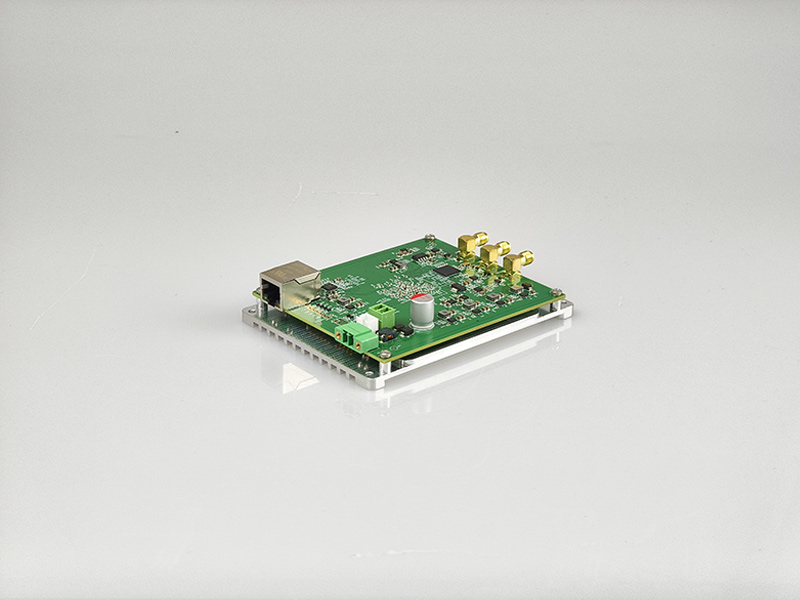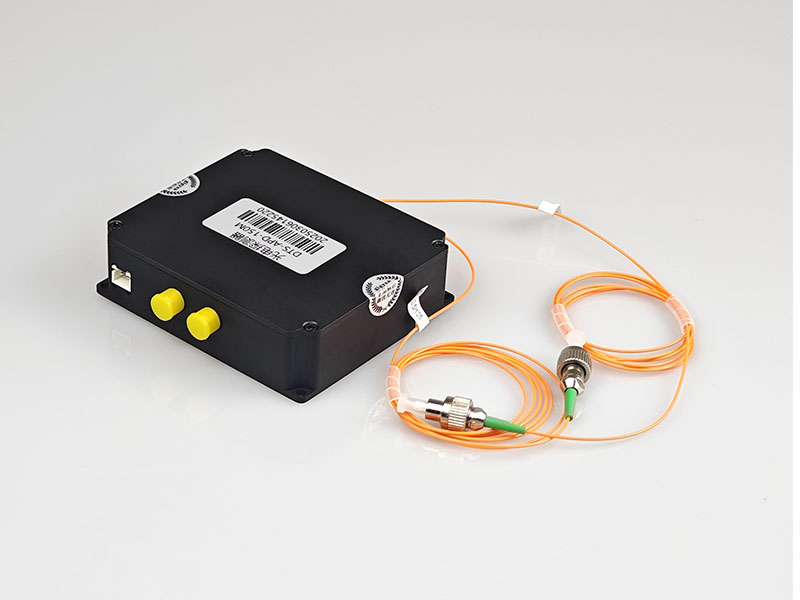DTS Nanosecond Laser Reliability Testing
Test Description
Reliability test is an activity carried out to ensure that a product maintains its functional reliability over a specified lifetime under all environments such as intended use, transportation or storage.DTS-LASER-1550-30 light source module has done a series of reliability experiments based on the problems that may be encountered in actual work.
Product Model
Product Model:DTS-LASER-1550-30
Description:The 1550nm pulsed laser is a high-efficiency pulsed light source based on the safe wavelength for human eyes. It adopts the structure design of main oscillator plus power amplifier (MOPA), and takes the high-performance narrow linewidth DFB-type (external cavity) semiconductor laser as the seed source, with the built-in signal generator; after optimized design of multi-stage optical amplification, it realizes the high-peak power and ns-level pulse width laser output, which is very suitable for the applications of LIDAR, UAV mapping, vehicle-mounted and many other fields. LIDAR UAV mapping, vehicle-mounted and many other applications.
Reliability Test Items
| Test items | referenced standard | Experimental Requirements | Number of tests |
|---|---|---|---|
| mechanical vibration | Telcordia GR-468-CORE | 20Hz-600Hz-20Hz, 4min per cycle, 4 cycles per axial direction, acceleration 20g. | 1PCS |
| High temperature storage | Telcordia GR-63-CORE | 55°C, 72h, working condition; 55°C to room temperature within 5 min. | 1PCS |
| Low Temperature Storage | Telcordia GR-63-CORE | Low temperature -15°C, 72h, working condition; -15°C to room temperature within 5 min. | 1PCS |
| temperature cycling | Telcordia GR-418-CORE | Temperature -15℃~55℃, limit temperature stay 15min, 100 cycles, non-working condition. | 1PCS |
| Fiber Retention force | Telcordia GR-1312-CORE | Load 1kg, horizontal tension, test 3 times, each time 5s | 1PCS |
| thermal imaging | Room temperature, 55°C or 40°C. | Temperature difference between before and after observation by infrared thermal imager 15°C | 1PCS |
| High temperature and humidity operation | Telcordia GR-63-CORE | 40℃, 93%RH, 80H, working condition | 1PCS |
| Fiber Bending | Telcordia GR-1312-CORE | Load 0.5kg, load point is 10cm from the end face of the pigtail, bend 180°, 300 times. | 1PCS |
| fall | GB_T31359-2015 | 1M Fall | 1PCS |
| optical torsion | Telcordia GR-1312-CORE | Load 0.5kg, 10cm from stress relief point, +180°, -360°, +360°, -360°, +360°, -360 twist, 100 times. | 1PCS |
| Fiber Retention force | Telcordia GR-1312-CORE | Load 1kg, horizontal tension, test 3 times, 5s each time. | 1PCS |
Failure criterion
| Test items | Failure criterion (change in optical power of the output signal (db)) | eligibility |
|---|---|---|
| mechanical vibration | ≤0.3 | ✔ |
| High temperature storage | ≤0.2 | ✔ |
| Low Temperature Storage | ≤0.2 | ✔ |
| temperature cycling | ≤0.3 | ✔ |
| Fiber Retention force | ≤0.3 | ✔ |
| thermal imaging | Product temperature and the actual temperature ≤ 15 ℃ | ✔ |
| High temperature and humidity operation | ≤0.3 | ✔ |
| Fiber Bending | ≤0.3 | ✔ |
| fall | ≤0.3 | ✔ |
| optical torsion | ≤0.3 | ✔ |
| Fiber Retention force | ≤0.3 | ✔ |
Test process/results
mechanical vibration
Test Methods: 20Hz-600Hz-20Hz, 4min per cycle, 4 cycles per axial direction, 20g acceleration.
Test image:
pre-vibration

after vibration

Test result: the change of optical power of output signal 3.043dbm-3.030dbm=0.013db, which meets the requirement.
High temperature operation
Test method: 55°C, 72h, non-operating condition; 55°C to room temperature within 5 minutes.
Test image:
Before high temperature operation
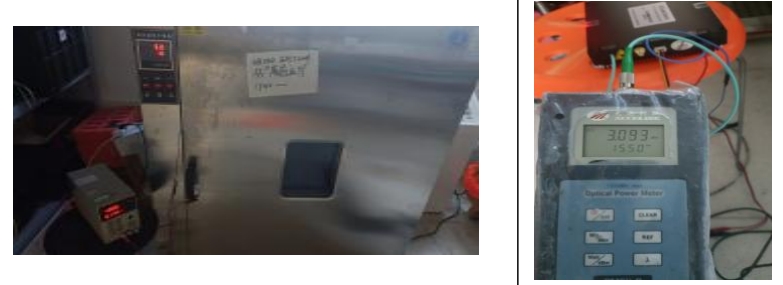
After high temperature operation

Test Result: Output signal optical power variation 0.05db, meet the requirements
low temperature operation
Test method: low temperature -15℃, 72h, non-operating condition; -15℃ to room temperature within 5 min.
After low temperature operation

Test Result: Optical power: 3.312dbm, meets requirements
Temperature cycling
Test Method: Temperature -15℃~55℃, stay at the limit temperature for 15min, 100 cycles, non-working condition.

Test result: the output signal optical power change amount 0.001db, in line with the requirements.
